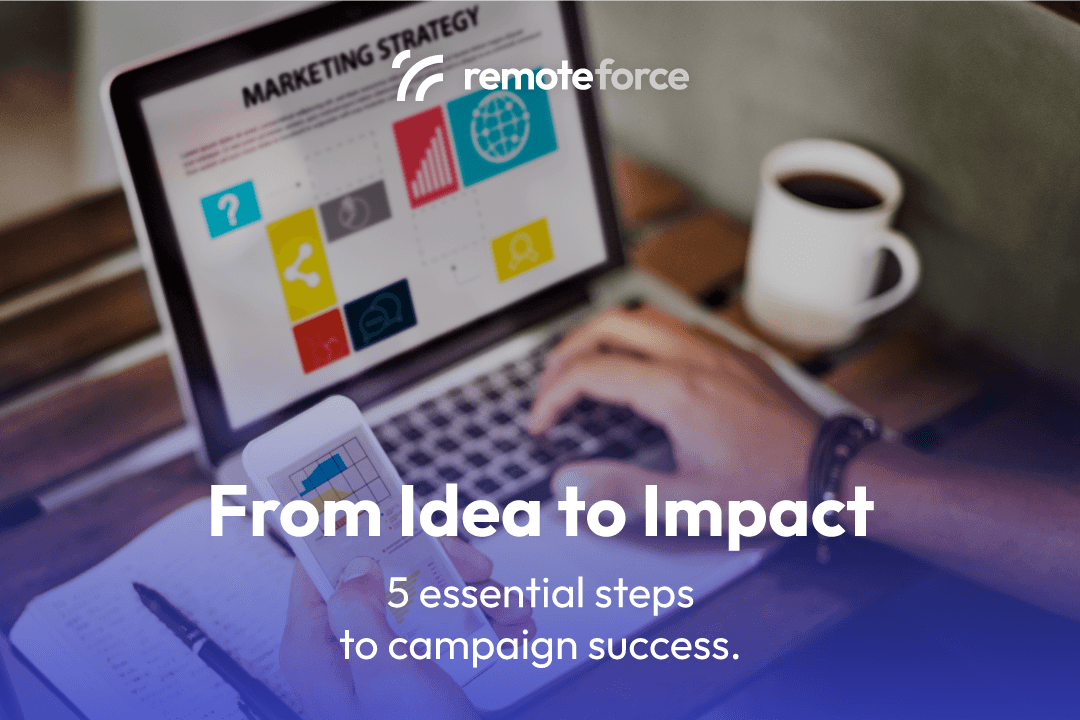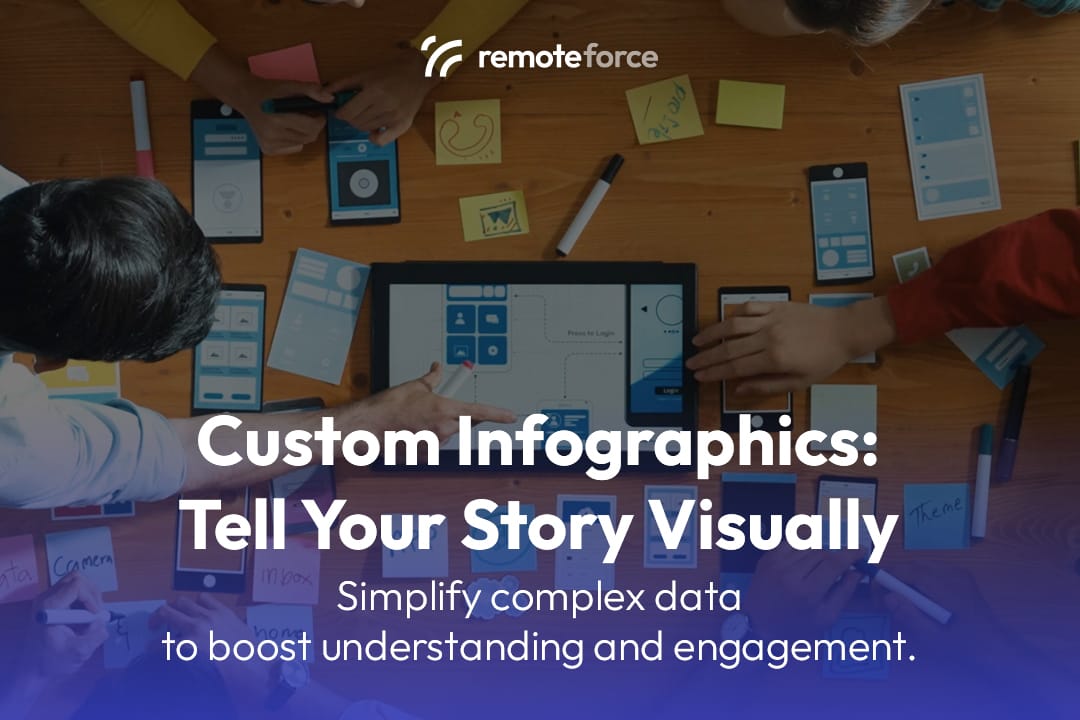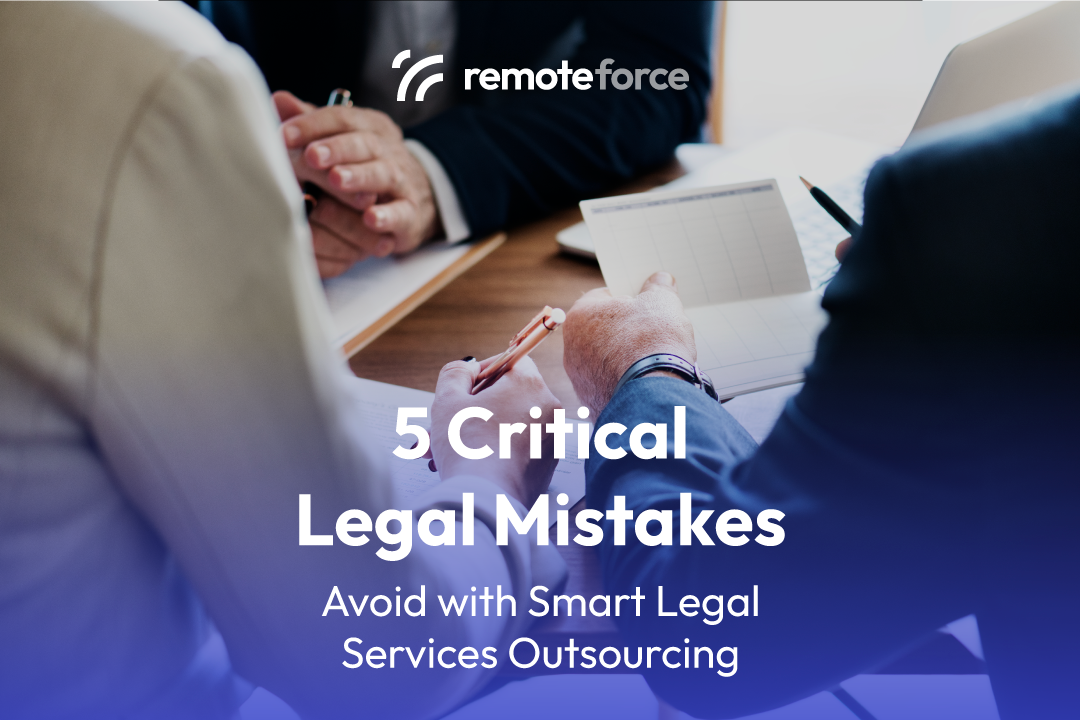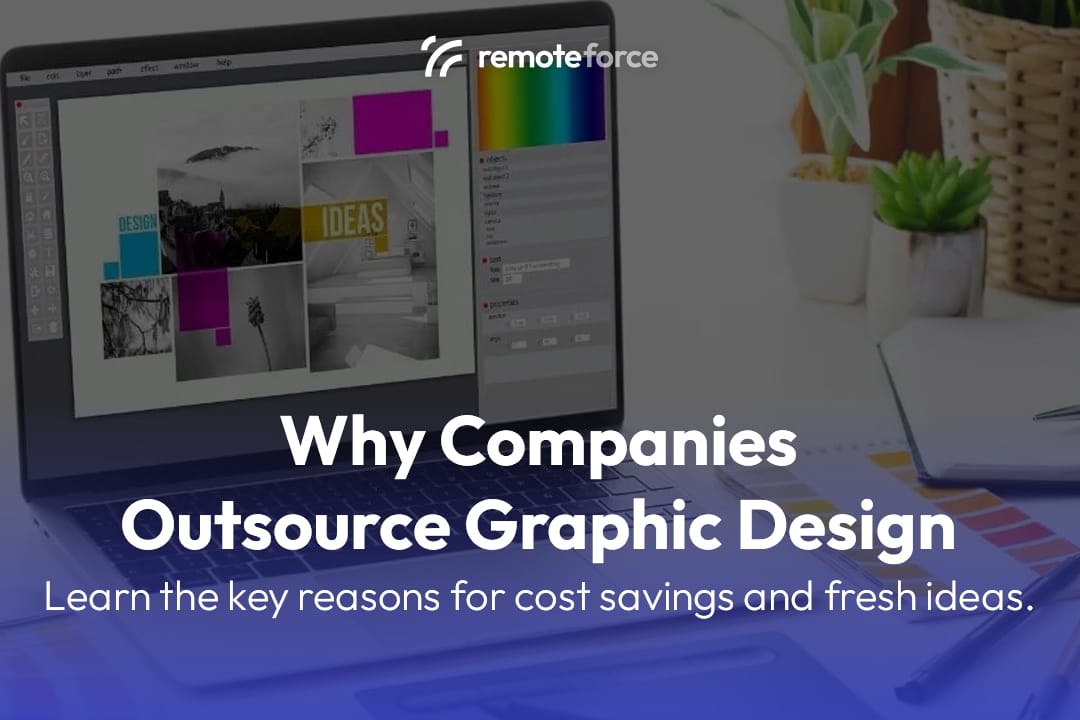In today’s competitive landscape, simply having a great product or service isn’t enough. To truly stand out, connect with your audience, and drive growth, you need a successful marketing campaign. A well-executed campaign can transform brand awareness into loyal customers, but it requires more than just a good idea; it demands strategy, precision, and continuous optimization.
If you’re looking to boost your brand, expand your reach, and convert prospects into loyal customers, understanding the fundamentals is key. This guide breaks down how to run a winning marketing campaign into 5 simple, proven steps, perfect for any business ready to make an impact.
Table of Contents
ToggleKey Takeaways
Successful marketing campaigns are built on structure, precision, and continuous data analysis.
- Clarity First: Your goals must be SMART (Specific, Measurable, Achievable, Relevant, Time-bound). Simultaneously, create detailed Buyer Personas to tailor your message precisely (Step 1).
- UVP is King: A clear Unique Value Proposition (UVP) that differentiates you from the competition, coupled with a compelling Call to Action (CTA), is non-negotiable (Step 2).
- Channel Priority: Resist the urge to be everywhere. Focus on 2-3 high-impact channels where your target audience is most active to achieve the best Return on Investment (ROI) (Step 3).
- A/B Test Everything: Execution (Step 4) must include a rigorous A/B Testing schedule for ads, creatives, and landing pages. Be agile and ready to pivot or pause underperforming elements instantly.
- Measure and Iterate: Success is defined by financial metrics like ROAS (Return on Ad Spend) and CAC (Customer Acquisition Cost). Use the data not just to report, but to optimize the next campaign (Step 5).
Why a Well-Planned Marketing Campaign is Non-Negotiable
In the digital age, consumers are bombarded with information. Without a clear, targeted, and engaging marketing campaign, your message can easily get lost in the noise. A structured approach allows you to:
- Define Your Message: Clearly articulate what makes your offering unique.
- Reach the Right Audience: Connect with those most likely to convert.
- Measure Effectiveness: Track what works and what doesn’t, optimizing for better results.
- Build Brand Loyalty: Foster a deeper connection with your customers.
Recent data from HubSpot indicates that businesses with a well-defined marketing strategy achieve significantly higher ROI compared to those that market haphazardly. This underscores the critical importance of a structured approach to your outreach efforts.
5 Key Steps to a Successful Marketing Campaign

Let’s dive into the actionable steps that will guide you from concept to conversion.
Step 1: Define Your Goals and Target Audience
Before you create a single piece of content or spend a dollar, you need clarity.
A. Set SMART Goals
Your campaign goals must be SMART:
- Specific: What exactly do you want to achieve? (e.g., “Increase website traffic,” not “Improve marketing”).
- Measurable: How will you track progress? (e.g., “Increase website traffic by 20%”).
- Achievable: Is the goal realistic given your resources?
- Relevant: Does it align with your overall business objectives?
- Time-bound: When do you want to achieve it? (e.g., “Increase website traffic by 20% in the next quarter”).
Examples of Marketing Goals:
- Increase brand awareness by X%.
- Generate Y leads for a new product.
- Achieve Z sales of a specific service.
- Improve customer retention by A%.
B. Identify Your Target Audience
Knowing who you’re talking to is paramount. Go beyond basic demographics.
- Demographics: Age, gender, location, income, education.
- Psychographics: Interests, values, lifestyle, attitudes, beliefs.
- Behavioral Data: Purchase history, website interactions, brand loyalty.
- Pain Points & Needs: What problems do they have that your product/service solves?
Actionable Insight: Develop buyer personas. Give your ideal customers names, backstories, and motivations. This makes them feel real and helps you tailor your messaging effectively. For instance, instead of “small business owners,” think of “Sarah, a freelance graphic designer struggling to find new clients.”
Step 2: Craft Your Message and Value Proposition
Once you know your audience and goals, you need to articulate why they should care about your offering.
A. Develop Your Unique Value Proposition (UVP)
What makes you different and better than the competition? Your UVP should be clear, concise, and compelling.
- Highlight your unique benefits, not just features.
- Solve a specific problem for your target audience.
- Communicate your UVP consistently across all campaign materials.
B. Create Compelling Content and Creative Assets
This is where your message comes to life. Your content should resonate with your target audience and align with your UVP.
- Content Formats: Blog posts, videos, infographics, social media posts, email newsletters, whitepapers, case studies, podcasts.
- Visuals: High-quality images, engaging videos, and consistent branding.
- Call to Action (CTA): A clear, compelling instruction for what you want your audience to do next (e.g., “Shop Now,” “Download the Guide,” “Sign Up for a Free Trial”).
Expert Tip: Focus on storytelling. People connect with narratives, not just facts. How does your product or service transform your customers’ lives?
Step 3: Choose Your Marketing Channels
You’ve got your message; now, where will you deliver it? The best channels are where your target audience spends their time.
- Digital Channels:
- Social Media Marketing: Facebook, Instagram, LinkedIn, TikTok, X (Twitter) – choose platforms relevant to your audience.
- Search Engine Optimization (SEO): Optimizing your website and content to rank higher in search engine results (Google, Bing).
- Paid Advertising (PPC): Google Ads, social media ads (Facebook Ads, LinkedIn Ads) for targeted reach and immediate results.
- Email Marketing: Building and nurturing relationships through newsletters, promotions, and personalized communication.
- Content Marketing: Creating valuable, relevant content to attract and engage your audience.
- Influencer Marketing: Collaborating with individuals who have a strong following in your niche.
- Traditional Channels (if applicable): Print ads, radio, TV, direct mail, billboards, events.
Strategic Consideration: Don’t try to be everywhere. Focus on 2-3 channels where your target audience is most active and where you can achieve the best ROI. A multi-channel approach often works best, but prioritize.
Step 4: Execute Your Campaign and Launch
This is where all your planning comes together.
- Create a Content Calendar: Plan out when and where each piece of content will be published.
- Schedule Posts and Ads: Use scheduling tools for social media and advertising platforms for consistent delivery.
- Monitor Performance (Initial Phase): Immediately after launch, keep a close eye on your campaign’s initial performance. Look for immediate red flags or unexpected successes.
- A/B Testing: For ads and landing pages, run A/B tests with different headlines, images, or CTAs to see what performs best. This is crucial for optimization.
Pro Tip: Even the best-planned campaigns can hit snags. Be prepared to be agile. If a particular ad isn’t performing, pause it and try something new.
Step 5: Measure, Analyze, and Optimize
A campaign isn’t truly successful until you analyze its results and use those insights for future improvements.
- Track Key Performance Indicators (KPIs): These are the metrics that directly align with your SMART goals.
- Website Traffic: Unique visitors, page views, bounce rate.
- Conversion Rate: Percentage of visitors who complete a desired action (e.g., purchase, sign-up).
- Lead Quality/Quantity: How many qualified leads were generated?
- Sales Revenue: Direct impact on your bottom line.
- Engagement Metrics: Likes, shares, comments, click-through rates.
- Customer Acquisition Cost (CAC): How much did it cost to acquire each new customer?
- Return on Ad Spend (ROAS): How much revenue did you generate for every dollar spent on ads?
- Analyze Data: Don’t just collect data; analyze it to understand why certain results occurred. What worked? What didn’t? Why?
- Optimize and Iterate: Use your findings to refine your strategy for the next campaign. This continuous loop of measurement and optimization is the secret to long-term marketing success.
Case Study: A small SaaS company launched a digital ad campaign targeting a new user segment. Initial results showed high click-through rates but low conversion. Upon analysis, they realized their landing page messaging wasn’t aligned with the ad’s promise. They optimized the landing page content, leading to a 3x increase in conversion rate within weeks, achieving their quarterly goal.
Also Read: What Is Inbound Marketing and How Does It Work?
Practical Campaign Execution: Ensuring Message Alignment and Funnel Handoff
Execution is where many campaigns fail due to poor consistency. The crucial link is ensuring the customer experiences a single, continuous message when moving from an ad to a conversion point.
The Ad-to-Landing Page Consistency Check (The A/L Match)
The most common mistake is a mismatch between the ad creative and the landing page experience.
- Action: Ensure the headline on the landing page is an exact match (or close paraphrase) of the ad’s main promise or UVP. The imagery, color palette, and tone must also feel consistent. If the ad promises a “50% off summer sale,” the landing page must immediately feature a 50% off headline and redemption mechanism.
Creating a “Remarketing Bridge” (Channel Handoff)
Successful campaigns view channels not as isolated silos, but as a bridge for the customer’s journey.
- Action: Strategically use a low-cost, high-reach channel (like a short Instagram video) to push users into an audience pool that can be immediately retargeted on a high-intent channel (like Google Search or YouTube). This handoff guides the user seamlessly through the awareness and consideration stages.
The Importance of a Centralized Content Hub
Maintaining consistency across multiple platforms requires a single source of truth for assets.
- Action: Implement a Product Information Management (PIM) system or a shared cloud drive for all approved copy, logos, style guides, and high-resolution creatives. This ensures that the team executing the email, social media, and paid ads all pull from the same, approved asset library.
Conclusion: Empower Your Growth with Strategic Marketing
Running a successful marketing campaign isn’t about guesswork; it’s about following a structured, data-driven process. By meticulously defining your goals and audience, crafting compelling messages, choosing the right channels, executing with precision, and continuously analyzing and optimizing, you can significantly boost your brand’s visibility and drive tangible business growth. This five-step framework provides the roadmap to turn your marketing efforts into measurable success.
Navigating the complexities of digital marketing, from SEO to paid ads and content strategy, can be challenging for any business. That’s where expert assistance becomes invaluable. At RemoteForce, we specialize in empowering businesses with comprehensive digital marketing services. Our team of seasoned professionals can help you define your strategy, create high-impact content, manage your campaigns across various channels, and optimize for unparalleled results. Beyond marketing, we also offer graphic design, secretarial, legal, web/app development, and accounting services, providing a holistic solution for your business needs.
Ready to launch your next winning marketing campaign and accelerate your growth? Contact RemoteForce today to learn how our digital marketing expertise can transform your business!
Frequently Asked Questions (FAQ)
1. What is the difference between a goal and a KPI in campaign planning?
The Goal is the destination (what you want to achieve). The KPI (Key Performance Indicator) is the GPS or the metric used to measure progress toward that destination.
- Example: Goal: Increase sales of Service X by 20%. KPIs: Conversion Rate, Customer Acquisition Cost (CAC), and Sales Revenue.
2. How long should I run an A/B test before declaring a winner?
An A/B test should run until it achieves statistical significance or until you collect at least 1,000 to 2,000 impressions or 100 conversions (whichever comes first) on each variation. Running a test for only a few days is risky, even if one variation is ahead, as it might not account for weekly audience behaviour shifts.
3. How much of my campaign budget should I allocate specifically to A/B testing?
A good starting point is dedicating 10% to 15% of your media spend to testing new ideas (creatives, headlines, landing pages). This ensures you are constantly learning and evolving your campaigns without risking the majority of your budget on unproven concepts.
4. What is the biggest non-data reason marketing campaigns often fail?
Lack of Internal Alignment. A campaign fails when the marketing message promises something (e.g., fast customer support) that the operations or sales team cannot deliver. The entire company must be aligned and prepared to support the campaign’s UVP and CTAs.




